
Table of Contents
In the digital age, social media has become an indispensable tool for businesses, non-profits, and individuals alike. Yet, managing these platforms can often feel like a daunting task, especially when resources are limited. The question is, how can you effectively navigate the social media landscape without breaking the bank? The answer lies in affordable, yet effective social media management strategies. This article aims to demystify the process by presenting 10 practical, budget-friendly strategies that actually work. By the end of this read, you’ll not only agree that affordable social media management is possible, but you’ll also have a clear roadmap to implement these strategies and watch your online presence flourish. Let’s dive in!
First, let’s address the elephant in the room. Social media management tools and services can be expensive, with some platforms charging upwards of $100 per month. But what if we told you that you don’t need to spend a fortune to see results? According to a study by Buffer, 73% of marketers believe that social media marketing has been ‘somewhat effective’ or ‘very effective’ for their business. The key is to leverage the right strategies that maximize your impact without draining your budget.
So, what can you expect to gain from this article? By the end of this read, you’ll have a comprehensive understanding of affordable social media management strategies that can help you:
- Save time and resources
- Increase your online visibility
- Engage with your audience
- Build your brand
- Generate leads and conversions
- And most importantly, do all of this without breaking the bank!
Now, let’s get started. In the following sections, we’ll explore 10 practical strategies that will help you manage your social media presence affordably and effectively. From leveraging free tools to repurposing content, we’ve covered it all. So, grab a cup of coffee, get comfortable, and let’s embark on this journey to affordable social media success!
Boost Your Brand’s Online Presence Without Breaking the Bank
In today’s digital age, having a robust online presence is crucial for businesses of all sizes. However, boosting your brand’s visibility doesn’t necessarily mean breaking the bank. With a strategic approach and some creative thinking, you can significantly enhance your online presence without overspending. Start by optimizing your website for search engines, ensuring it’s user-friendly, mobile-responsive, and packed with relevant keywords. This will help you rank higher in search results, driving organic traffic to your site. Next, leverage the power of social media platforms to engage with your audience. Regularly post high-quality content tailored to your target audience, and use relevant hashtags to increase your posts’ reach. Collaborate with micro-influencers in your niche who can promote your brand authentically without charging exorbitant fees. Email marketing is another cost-effective strategy that can help you nurture customer relationships and drive sales. By consistently providing valuable content to your subscribers, you can keep your brand top of mind and encourage repeat business. Lastly, don’t underestimate the power of online reviews. Encourage satisfied customers to leave reviews on platforms like Google, Yelp, and Facebook, as positive reviews can significantly boost your brand’s credibility and attract new customers. By implementing these strategies, you can boost your brand’s online presence without resorting to expensive marketing tactics.
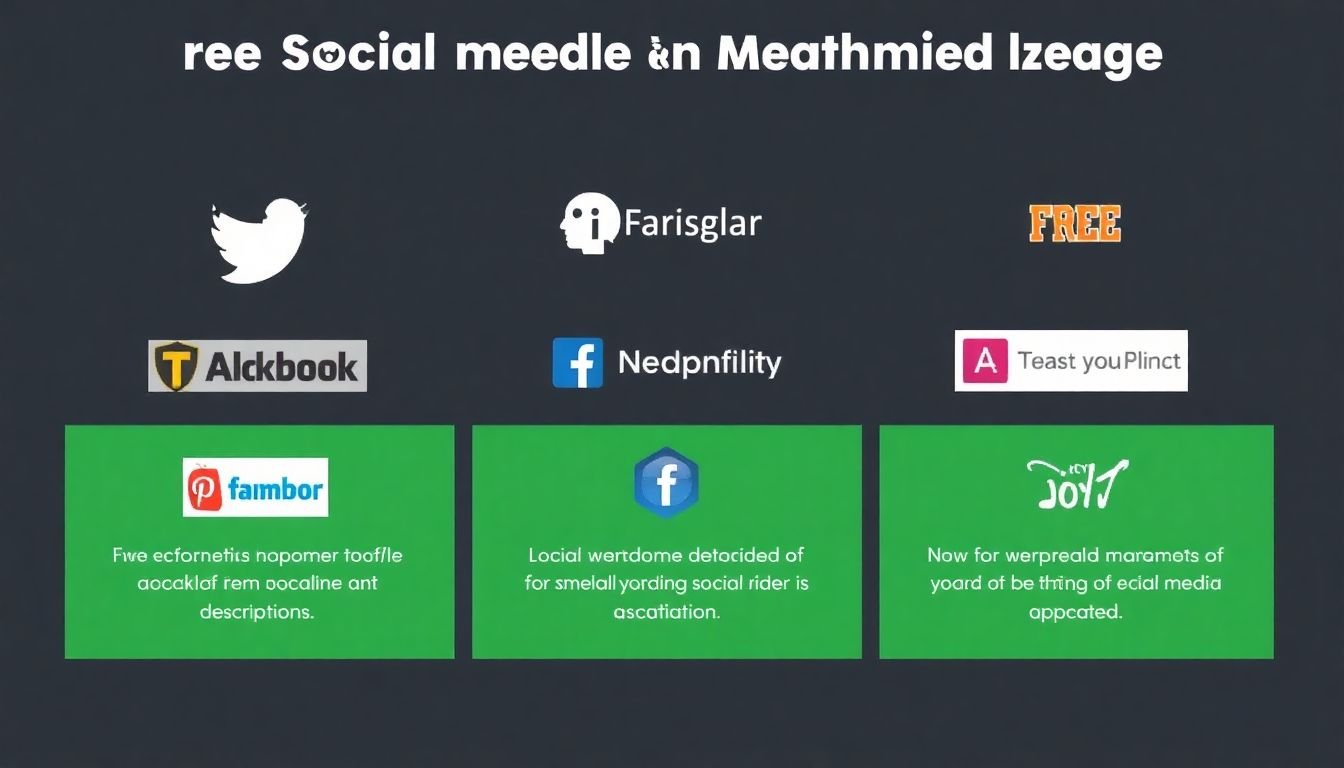
Leverage Free Tools
In the dynamic world of social media management, time and resources are precious commodities. Fortunately, there’s a treasure trove of free tools that can streamline your workflow, boost productivity, and save you money. Let’s dive into three powerful tools that are not only free but also incredibly effective: Buffer, Hootsuite, and Canva.
Buffer: The Automated Assistant
Buffer is like having a dedicated social media assistant that works 24/7. It allows you to schedule posts in advance for platforms like Twitter, Facebook, Instagram, and LinkedIn. Here’s how to use it effectively:
- Connect your social media profiles to Buffer.
- Click on ‘Schedule a post’ and choose the platforms you want to post to.
- Write your post, add relevant hashtags, and schedule it for a specific date and time.
- Buffer will automatically publish your post at the scheduled time, freeing up your time to focus on other tasks.
Buffer also provides analytics to help you understand your audience and the performance of your posts.
Hootsuite: The All-in-One Dashboard
Hootsuite is another robust tool that offers a comprehensive dashboard to manage multiple social media profiles. It supports platforms like Twitter, Facebook, Instagram, LinkedIn, Pinterest, and YouTube. Here’s how to make the most of Hootsuite:
- Create a free account and connect your social media profiles.
- Set up streams to monitor specific keywords, hashtags, or lists.
- Use the ‘Publisher’ feature to schedule posts in advance.
- Engage with your audience directly from the dashboard by responding to mentions and messages.
- Analyze your performance with Hootsuite Insights.
Hootsuite’s user-friendly interface makes it easy to manage all your social media activities in one place.
Canva: The Graphic Designer
Canva is an excellent tool for creating eye-catching graphics to accompany your social media posts. With a vast library of templates, fonts, and design elements, Canva makes it easy to create professional-looking graphics even if you’re not a designer. Here’s how to use Canva effectively:
- Sign up for a free account and choose a template or start with a blank design.
- Customize your design by adding text, images, and design elements from Canva’s library.
- Use the ‘Resize’ feature to create graphics for different social media platforms.
- Download your design and upload it to your social media scheduler (like Buffer or Hootsuite).
Canva’s free plan offers a wide range of features, and you can upgrade if you need more advanced features.
By leveraging these free tools, you can save time, money, and improve the overall efficiency of your social media management. So, go ahead and give them a try – your future self will thank you!
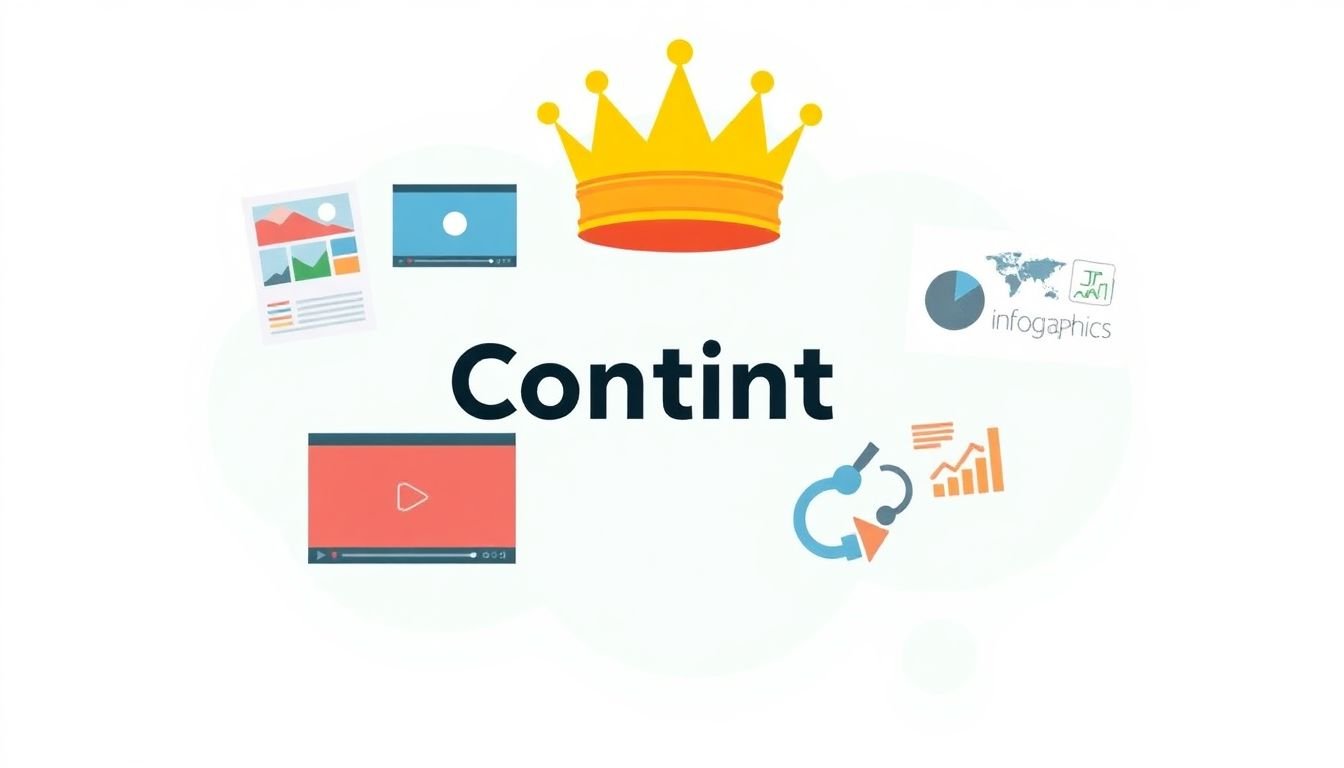
Content is King
In the vast kingdom of digital marketing, there’s a phrase that reigns supreme: ‘Content is King.’ This isn’t just a catchy slogan; it’s a testament to the power of quality content in capturing and retaining audiences in today’s information-overloaded world. Think of it this way: in a grand banquet hall filled with guests, the king’s speech is what commands attention, stirs emotions, and leaves a lasting impression. Similarly, in the digital realm, it’s your content that holds the scepter, ruling over your audience’s engagement and loyalty.
But what makes a king’s speech, or rather, a king’s content? It’s all about quality, relevance, and engagement. Quality content is like a well-crafted story that captivates, informs, or entertains. It’s not about the size of your content team or the budget you have; it’s about the value you deliver. Relevance is about understanding your audience, their needs, and their interests. It’s about speaking their language and addressing their pain points. Engagement is about creating content that sparks conversations, encourages shares, and fosters a sense of community.
Now, you might be thinking, ‘That’s all well and good, but I can’t afford to hire expensive content creators.’ Here’s where the magic of ‘Content is King’ truly shines. You don’t need a royal treasury to create a king’s content. Instead, focus on these steps:
- Know Your Audience: Understand their demographics, their preferences, and their behaviors. This is your kingdom, and they are your subjects. Know them well.
- Plan Your Content: Use a content calendar to plan your posts in advance. This ensures you’re covering a variety of topics and aren’t scrambling for ideas at the last minute.
- Repurpose Content: Turn a blog post into an infographic, a video into a podcast, or a podcast into a series of social media posts. You’d be surprised how much mileage you can get out of a single piece of content.
- Engage with Your Audience: Respond to comments, ask for feedback, and encourage user-generated content. Make your audience feel like they’re part of the story, not just spectators.
- Keep Learning and Improving: Use analytics to understand what’s working and what’s not. Then, refine your content strategy accordingly.
Remember, the key to creating a king’s content isn’t about the size of your budget, but the size of your imagination and your commitment to your audience. So, go forth, rule your kingdom, and let ‘Content is King’ be your royal mantra.
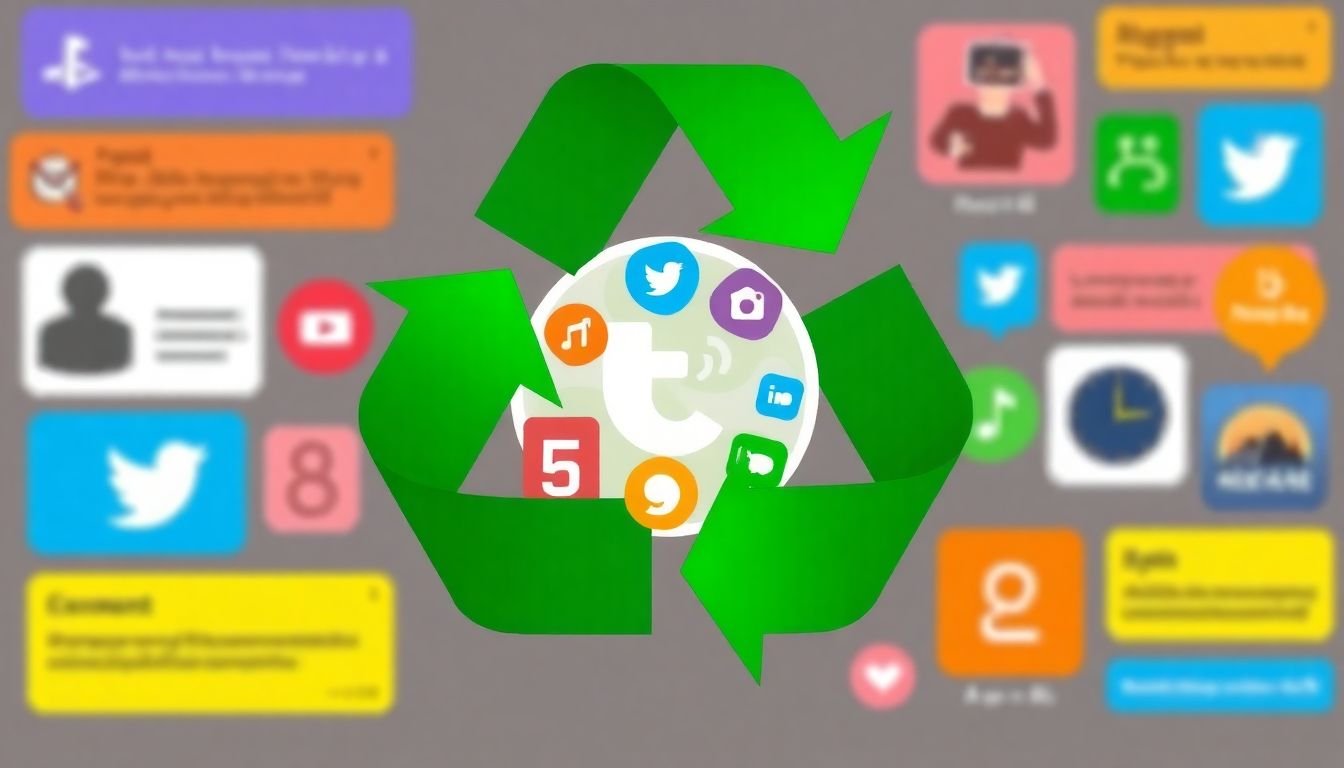
Repurpose and Recycle
In the digital age, content is king, but that doesn’t mean we should be wasteful with our creations. Repurposing and recycling content is a strategic way to maximize its lifespan and reach, ensuring that your hard work isn’t confined to a single platform or format. Let’s explore how to turn one piece of content into a treasure trove of engagement.
The journey begins with a blog post, a comprehensive piece of content that’s perfect for breaking down into smaller, more digestible formats. First, identify the key points or statistics from your blog post. These can be transformed into an infographic, a visual medium that’s highly shareable and can reach audiences who prefer their information in a quick, easy-to-understand format. Remember, infographics should be clean, uncluttered, and tell a story at a glance.
Next, consider the power of social media. A single blog post can be repurposed into a series of tweets, each focusing on a single point or quote. This not only increases the visibility of your original content but also drives traffic back to your blog. Here’s how you can do it:
- Break down your blog post into key takeaways or quotes.
- Each tweet should be concise, engaging, and include a link back to your blog post.
- Use relevant hashtags to increase the reach of your tweets.
LinkedIn, another powerful platform, is perfect for long-form content. You can repurpose your blog post into a LinkedIn article, reaching a professional audience. Don’t forget to include a call-to-action, encouraging readers to visit your blog for more content.
Lastly, consider turning your blog post into a short video or a podcast episode. This caters to audiences who prefer audio-visual content. Remember, the goal is to reach as many people as possible with your message, and repurposing and recycling content is the key to achieving that.
So, the next time you publish a blog post, don’t let it be a one-hit wonder. Give it a new lease on life by repurposing and recycling it across different platforms. Your audience, and your content, will thank you.
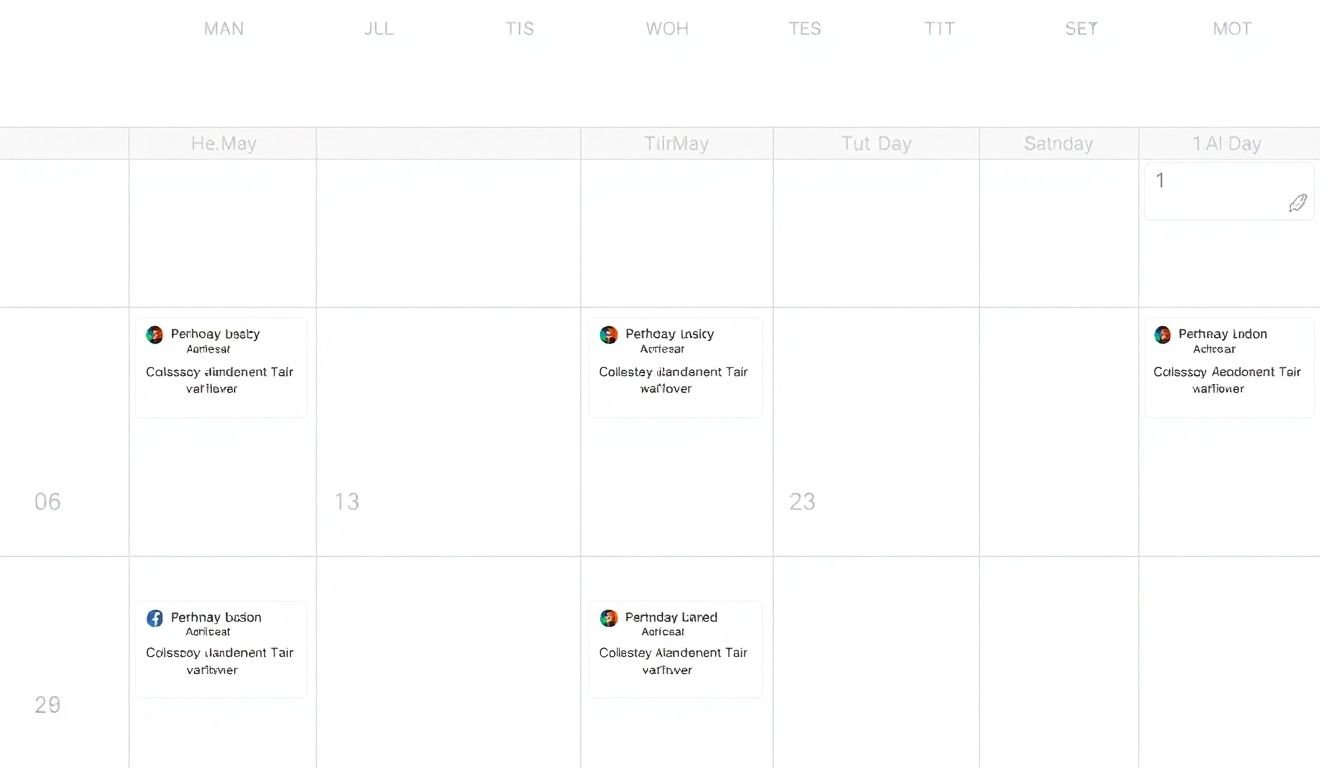
Consistency is Key
Consistency, in the realm of digital content creation, is not merely an option; it’s the key that unlocks the door to audience engagement, brand recognition, and ultimately, success. Imagine you’re at a bustling market, and you stumble upon a vibrant stall with an intriguing product. You’re drawn in, but when you return the next day, the stall is unrecognizable
- a different color scheme, a new product, and an unfamiliar vendor. Confusing, right? This is the digital equivalent of inconsistent posting and branding. Your audience, much like you at the market, needs familiarity to build trust and loyalty.
Now, maintaining consistency doesn’t mean you’re stuck in a creative rut. It’s about establishing a rhythm and a voice that resonates with your audience. Think of it like a dance
- you have your signature moves (your brand’s aesthetic and voice), but you can still improvise within that framework.
Let’s break down how to maintain this consistency on a budget:
- Plan Ahead: Use content calendars to schedule your posts in advance. This way, you’re not scrambling for ideas at the last minute, ensuring your content stays consistent with your brand’s voice and aesthetic.
- Find Your Voice: Identify what makes your brand unique. Is it humorous, informative, or inspirational? Once you’ve found your voice, stick to it. It’s like finding your signature dance move
- it’s what makes people recognize you on the dance floor.
- Establish an Aesthetic: This could be a color scheme, a specific filter, or a certain type of imagery. Whatever it is, make sure it’s consistent across all your platforms. Think of it as your brand’s signature outfit
- it should be recognizable from a distance.
- Repurpose Content: You don’t always need to create new content. Repurpose old content in new ways. For instance, turn a blog post into an infographic or a series of social media posts. It’s like learning a new dance move but incorporating it into your existing choreography.
Remember, consistency is about building a relationship with your audience. It’s about being the familiar face in a sea of new ones. So, stick to your brand’s voice and aesthetic, and watch as your audience grows to love and recognize you.

Engage, Don’t Sell
In the digital age, the traditional sales pitch has evolved. Today, it’s not about the hard sell, but the soft touch
- engagement. Engaging with your audience is the new currency, and it’s more valuable than any sales pitch. Here’s why and how:
Engagement fosters a connection, a relationship. It’s about understanding your audience, their needs, their aspirations. It’s about being human, not corporate. When you engage, you’re not just selling a product, you’re selling an experience, a lifestyle, a community.
Think of it like a conversation at a dinner party. No one wants to be cornered by the person who only talks about their business. But everyone loves the person who listens, who asks insightful questions, who shares interesting stories. That’s the kind of interaction that builds loyalty, that makes people want to be part of your ‘party’.
So, how do you engage? Here are some strategies:
- Listen: Social media is a two-way street. Respond to comments, ask questions, show genuine interest in what your followers have to say.
- Share Stories: People connect with stories. Share your brand’s story, your team’s story, your customers’ stories. Make your audience feel part of your journey.
- Educate: Share your expertise. Provide value. Whether it’s tips, tricks, or industry insights, make your audience feel they’re learning something new.
- Be Consistent: Consistency builds familiarity, and familiarity builds trust. Post regularly, maintain a consistent tone of voice, and stay true to your brand values.
- Interact: Run contests, host Q&As, collaborate with influencers. Create opportunities for your audience to interact with your brand.
Remember, engagement is a marathon, not a sprint. It takes time, patience, and a genuine desire to connect. But the rewards
- a loyal, engaged audience who can’t wait to be part of your ‘party’
- are worth it.
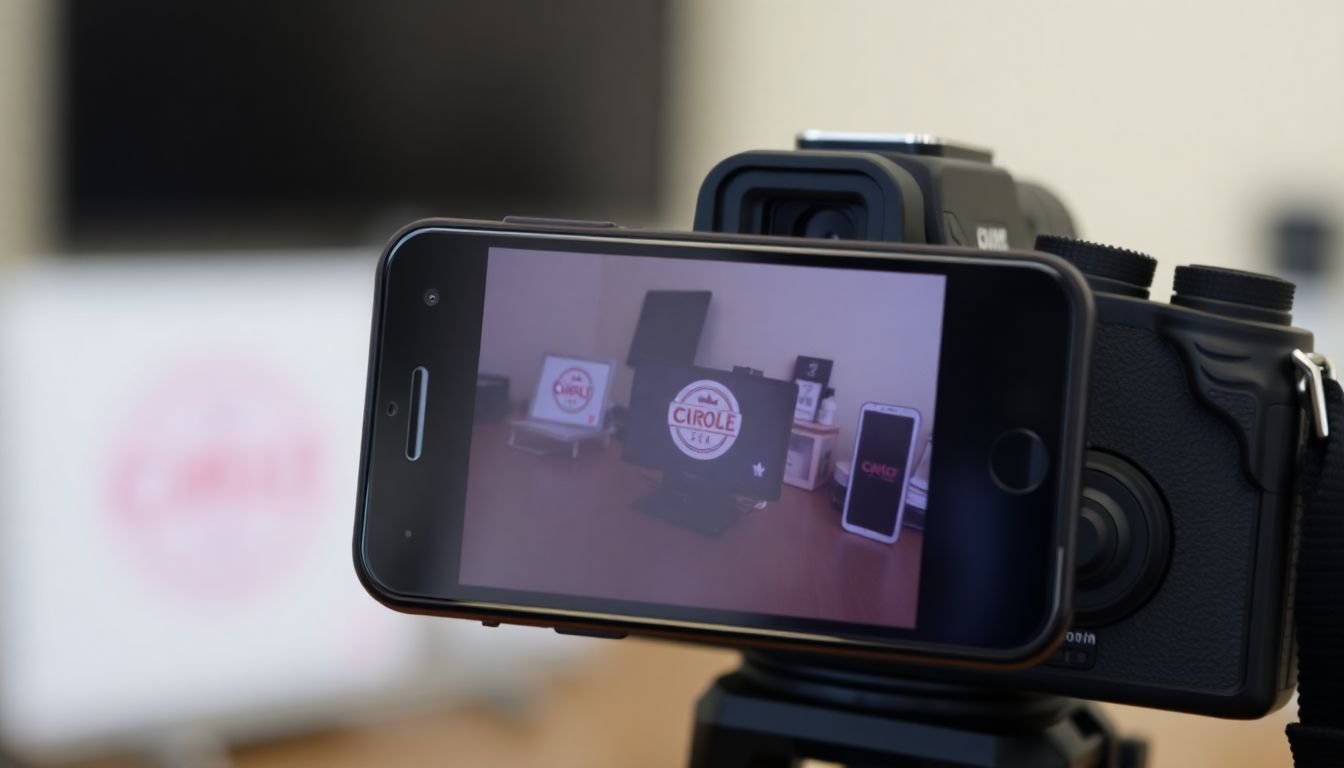
User-Generated Content
In the digital age, user-generated content (UGC) has emerged as a powerful tool, transforming the way brands engage with their audience and fostering a sense of community. UGC refers to any content—text, videos, images, reviews, etc.—created by people, rather than brands. It’s a potent force that can significantly boost your brand’s reach, credibility, and customer engagement.
The power of UGC lies in its authenticity and trustworthiness. Consumers are more likely to trust and engage with content created by their peers than with branded content. According to a study by Bazaarvoice, 85% of consumers trust online reviews as much as personal recommendations. Moreover, UGC can save brands time and money, as it reduces the need for constant content creation.
So, how can you encourage your followers to create content for your brand? Here are some steps:
- Create a Hashtag: Develop a unique, memorable hashtag that your audience can use when sharing content related to your brand. This not only makes it easier for you to find and collect UGC but also encourages users to engage with your brand.
- Host Contests and Giveaways: People love free stuff! Hosting contests or giveaways where users have to create and share content to enter can significantly increase your UGC.
- Incentivize: Offer incentives for users to create and share content. This could be in the form of discounts, free products, or even features on your brand’s social media pages.
- Engage with Your Audience: Respond to and share user-generated content. This shows your audience that you value their contributions and encourages them to create more content.
By harnessing the power of user-generated content, you can build a stronger, more engaged community around your brand, all while saving time and money.

Collaborate, Don’t Compete
In today’s digital landscape, expanding your brand’s reach doesn’t necessarily mean breaking the bank. Instead of focusing on competition, consider the power of collaboration. Influencers and other brands can be your secret weapons to amplifying your message and reaching new audiences. Here’s a simple, budget-friendly guide to help you find and collaborate with them.
The first step is to identify potential influencers and brands that align with your niche. Use tools like BuzzSumo, Followerwonk, or even Instagram’s search function to find accounts with engaged audiences who might be interested in your product or service. Once you’ve compiled a list, it’s time to reach out.
Crafting the perfect pitch is crucial. Be personal, genuine, and clear about what you’re offering. Explain why you think a collaboration would benefit both parties. Here’s a simple template to get you started:
- Introduce yourself and your brand.
- Compliment their content or achievements.
- Explain why you think a collaboration would be a good fit.
- Propose a collaboration idea or leave it open for discussion.
- Include your contact information.
When it comes to collaborations, there are numerous ways to work together without spending a fortune. Here are a few ideas:
- Gifted Partnerships: Send them your product for free in exchange for a review or mention. This works best with micro-influencers who are more likely to accept gifted collaborations.
- Affiliate Marketing: Give them a unique discount code for their followers to use. You only pay when they make a sale.
- Content Swap: Create content for each other’s platforms. This could be a blog post, a social media take-over, or even a joint webinar.
- Bundle Deals: Collaborate with multiple brands to create a bundle of products or services. Each brand promotes the bundle to their audience, expanding reach for all involved.
Remember, the goal is to build relationships, not just secure one-off deals. Be open to their ideas, respect their audience, and always deliver on your promises. With the right strategy, you’ll find that collaborating, not competing, is the key to expanding your reach without breaking the bank.

Analyze and Adjust
In the dynamic landscape of digital marketing and website management, the phrase ‘Analyze and Adjust’ is not just a catchy slogan, but a fundamental strategy that drives success. The importance of analytics cannot be overstated; it’s the compass that guides us through the vast ocean of data, helping us understand user behavior, measure performance, and make informed decisions.
At the heart of this process are tools like Google Analytics, a free, powerful platform that offers a wealth of data. It provides insights into user demographics, traffic sources, bounce rates, and more. By understanding these metrics, we can tailor our content, improve user experience, and ultimately, drive conversions.
But Google Analytics is not the only player in this game. Platform-specific analytics tools, such as Facebook Insights for social media, or App Annie for mobile apps, offer deep dives into performance within their respective ecosystems. These tools allow us to track user engagement, measure the success of campaigns, and understand our audience on a granular level.
To leverage these tools effectively, let’s break down the process into simple steps:
- First, set up your analytics tools. This involves installing tracking codes on your website or app, and linking your platforms to your analytics account.
- Next, define your key performance indicators (KPIs). These could be anything from website traffic to app downloads, depending on your goals.
- Regularly monitor your analytics. This could be daily, weekly, or monthly, depending on your needs. The key is consistency.
- Analyze the data. Look for trends, patterns, and anomalies. This is where you’ll find insights that can inform your strategies.
- Adjust your strategies based on your findings. If a particular campaign isn’t performing well, tweak it. If a certain type of content is driving engagement, create more of it.
Remember, analytics is not a one-time task. It’s an ongoing process that requires continuous learning, adaptation, and improvement. So, keep analyzing, keep adjusting, and watch your performance soar.

Automation: Friend or Foe?
Automation in social media management, much like the mythical Janus, presents a dual face
- one of convenience and efficiency, the other of potential pitfalls. Let’s delve into the pros and cons, and explore when and how to wield this powerful tool effectively.
The allure of automation is undeniable. It’s the friend that never tires, the colleague that works 24/7, ensuring your social media presence is consistent and timely. Automated scheduling tools like Hootsuite or Buffer allow you to plan your posts in advance, freeing up your time to engage with your audience in real-time. They can also help maintain a consistent brand voice, as they can be programmed to use specific hashtags, mention handles, and maintain a uniform tone.
However, automation isn’t without its foes. Over-reliance can lead to a lack of authenticity. Social media is about engagement, and automated responses can come off as insincere or robotic. Moreover, automation can’t account for real-time events or trending topics. A post scheduled in advance might be tone-deaf or inappropriate if shared during a breaking news event.
So, how can we use automation effectively? First,
- use it for scheduling, but not for engagement. Respond to comments and messages manually to maintain a personal touch.
- employ it for repetitive tasks, like sharing blog posts or promoting events, but not for creative content.
- keep an eye on your automated posts. If something goes awry, you’ll want to be able to step in and correct it.
Lastly, remember that automation is a tool, not a replacement. It’s there to support and enhance your social media strategy, not dictate it. Used wisely, automation can be your friend, making your social media management more efficient and effective. But used unwisely, it can become a foe, leading to a loss of authenticity and engagement.